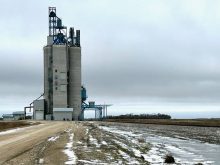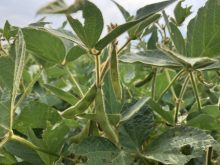MarketsFarm — Prices for feed barley and wheat in Western Canada are still higher than this time last year, but if large declines in those prices are any indication, the 2022 harvest is set to be more typical than that of 2021.
The high-delivered bid for Saskatchewan feed barley is $8 per bushel, $1 lower than last month, according to Prairie Ag Hotwire. Manitoba’s high-delivered bid is $7.47/bu., a month-by-month decline of $1.50, while Alberta’s high-delivered bid is $9.06/bu., dropping in price by $1.18 from last month.
Prices for western Canadian feed wheat are also falling. The high-delivered bid in Saskatchewan is $11/bu., down $3.25 from last month. In Manitoba, it is $11.37/bu. (down $1.95) and in Alberta, it’s $12.66/bu. (down $2.99).
Read Also

U.S. livestock: CME cattle tick lower in thin pre-holiday trade
Chicago | Reuters – Chicago Mercantile Exchange live and feeder cattle futures were little changed but ended slightly lower on…
Glen Loyns, general manager and trader for JGL Commodities at Moose Jaw, Sask., said with the exception of some damage caused by extreme weather, grain crops across the Prairies are faring well.
“For the most part, crops are pretty good throughout Saskatchewan,” he said. “In the western part of Saskatchewan, there’s still some dryness, but overall a lot better than they were last year. I’d say (yields will) be average, if not better.”
While demand has been low so far for new crop, Loyns anticipates feedlots will soon add more feed barley and wheat in place of corn.
Loyns stopped short of predicting how low feed grain prices could go, citing current and future world events. Compared to last year though, he called the outlook for this year’s crop “significantly better.”
“There was a drought across Western Canada and the northern United States. And now we have a crop,” he said. “I mean, there was no grain last year.”
Feed grains “are going to do quite well,” Loyns added. “We had scattered showers across all of Western Canada, on and off. They’re going to do well. They’re going to do OK.”
— Adam Peleshaty reports for MarketsFarm from Stonewall, Man.
















